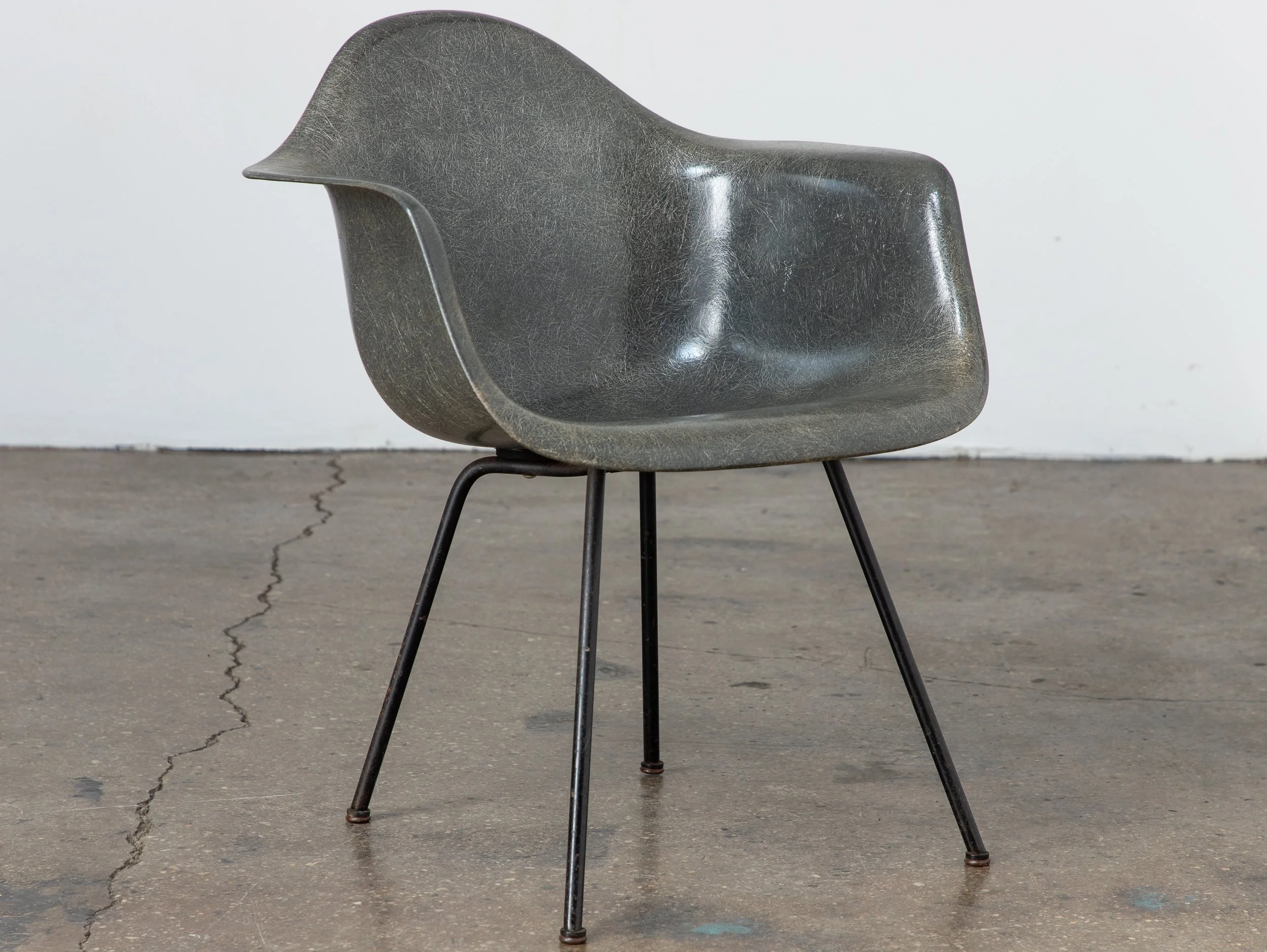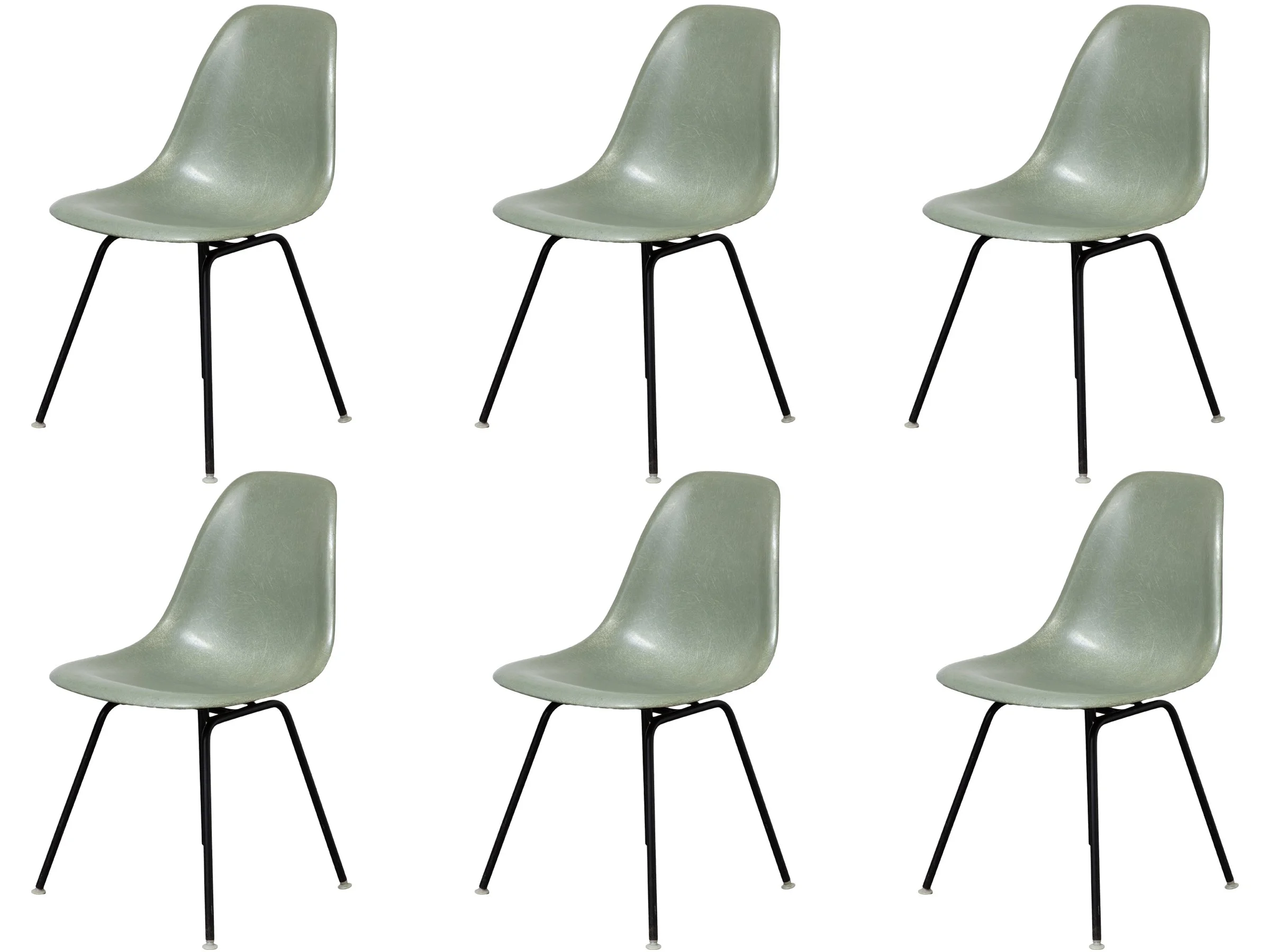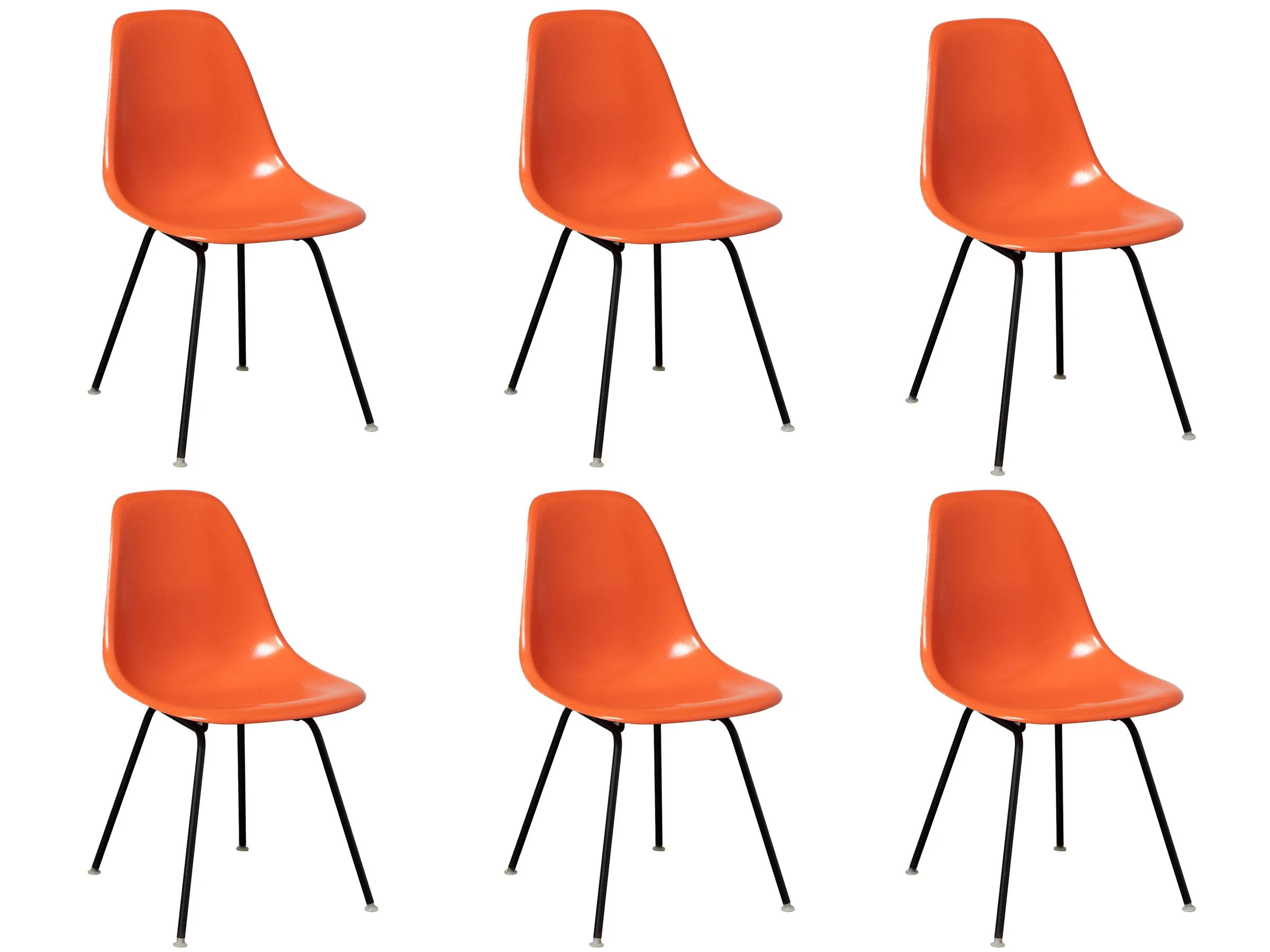Charles & Ray Eames
Happy furniture.
Charles and Ray Eames were an iconic husband-and-wife team who transformed American design in the mid-20th century, pioneering the look and feel of modern furniture, architecture, and industrial design. Their work, celebrated for its simplicity, functionality, and elegance, is central to the Mid-Century Modern aesthetic. Charles, trained as an architect, and Ray, a painter and designer, combined their unique talents to create innovative furniture that was not only beautiful but also accessible and practical.
Browse our Eames Collection
One of their most famous creations, the Eames Lounge Chair and Ottoman (1956), became an instant classic, representing the epitome of comfort and style with its sleek lines, use of molded plywood, and luxurious leather upholstery. Other notable works include the Eames Molded Plastic Chair and the Eames Wire Chair, both designed with a focus on mass production and affordability. They revolutionized the furniture industry by employing new techniques such as molded plywood and fiberglass, which allowed for the creation of ergonomic shapes that were previously difficult to achieve.
The Eameses also contributed to architecture and film, designing the Eames House (Case Study House No. 8) in Pacific Palisades, California. The house, which served as their home and studio, became a symbol of modern living, showcasing an open, modular space that integrated seamlessly with the surrounding environment.
Beyond their immediate work, Charles and Ray Eames left a lasting legacy on American design, influencing generations of designers and defining what we now consider "Mid-Century Modern" style. Their work emphasized form that follows function, and their designs continue to be admired for their ingenuity, simplicity, and elegance. Today, Eames pieces are still produced by Herman Miller and remain popular worldwide, embodying timeless design that combines beauty with everyday functionality.
Watch the iconic film Powers of Ten™ (1977)

“Any time one or more things are consciously put together in a way that they can accomplish something better than they could have accomplished individually, this is an act of design.”
— Charles Eames





